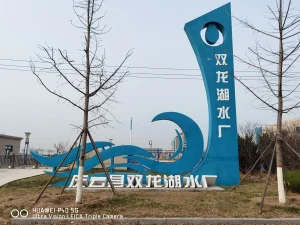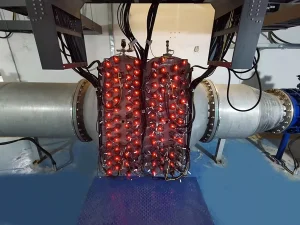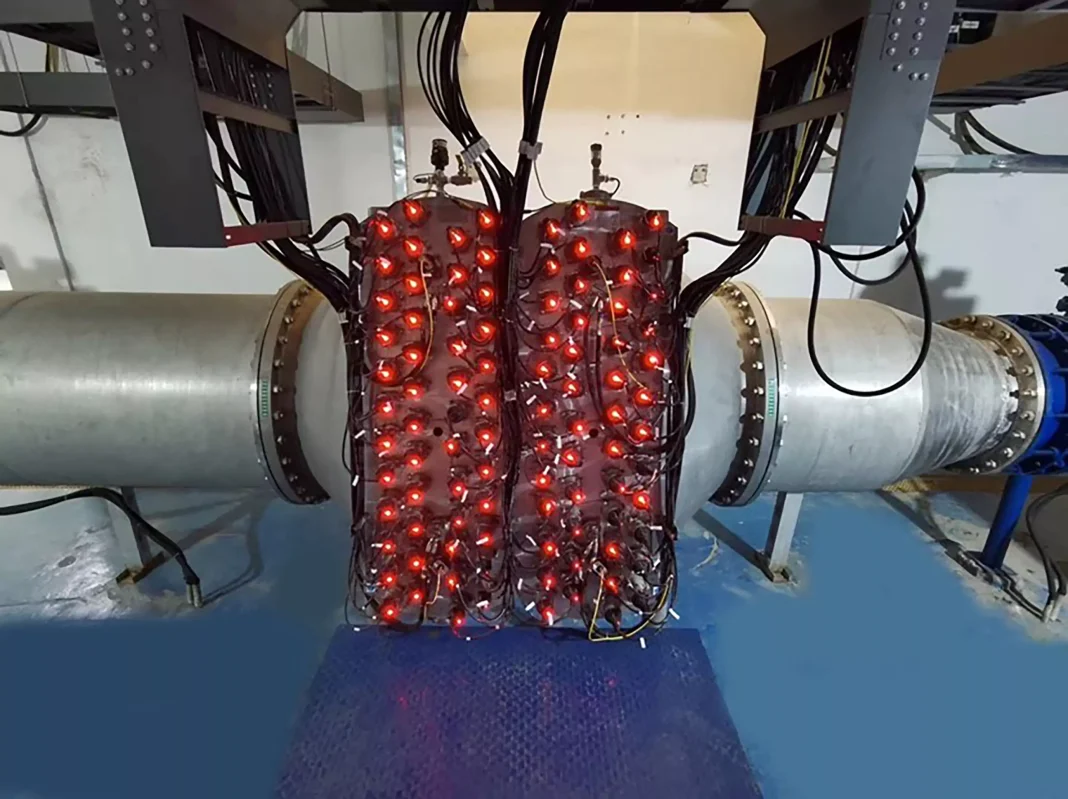Wenjun Sun, Xiuwei Ao and Zhongyun Chen, School of Environment, Tsinghua University
Kumiko Oguma, associate professor, Department of Urban Engineering, University of Tokyo
Ruibao Jia, Wuchang Song and Guifang Li, Shandong Urban Water Supply and Drainage Water Quality Monitoring Center
Wonglei Wang , professor, School of Municipal & Environmental Egineering, Shandong Jianzhu University
Shandong Province is located on the eastern coast of China, on the lower basin of the Yellow River. With a population of 98.47 million, the second highest in China, it covers an area of about 157,900 square kilometers (from the 2015 census). It has a typical temperate and monsoonal climate with four distinct seasons. It is predominantly an agricultural province in China. The shortage of water sources is a very serious problem in Shandong (Liu et al., 2019). It is a typical multisource water supply area, with limited access to major rivers. After the Eastern-Line South-to-North Water Transfer Project was connected, the water transferred from outside the region accounts for one-third of the total supply. Long distance water diversion, basin nonpoint source pollution and the release of endogenous pollution in the sediment of storage lakes and reservoirs lead to the problem of organic pollutants in drinking water (Li et al., 2020). The mixing of different types of water sources also causes the fluctuation and seasonal variation of water quality (Zhang et al., 2019).
Algae, taste and odor compounds, low molecular weight organic matters, bromide ion, sulfate, chloride, etc. have become priority controlled characteristic pollutants in Shandong’s drinking water treatment plants (DWTPs) (Li et al., 2016). However, in Shandong, few DWTPs apply advanced drinking water treatment process and enhanced conventional drinking water treatment process to address these water quality issues. Existing water treatment processes cannot effectively remove organic pollutants from the source water. The current national Standards for Drinking Water Quality (GB 5749-2006) in China, issued in 2007, has much more stringent requirements on drinking water quality than the previous guideline. To mitigate water quality risks and meet more stringent drinking water health standards, UV-based advanced oxidation process (UV-AOP) has attracted increasing attention for consideration in drinking water systems in China, especially in Shandong.

Among UV-AOPs, UV/H2O2 is a well-established technology used in full-scale for several decades (Li et al., 2020). The effectiveness of the UV/H2O2 has been demonstrated for several classes of organic pollutants, such as pharmaceuticals, pesticides, industrial compounds, etc. However, there was no precedence of applying UV/H2O2 at full-scale, in a real municipal DWTP in China. The first such application was installed in Shuanglonghu drinking water plant in Qingyun County, Dezhou City, Shandong Province, China (Figure 1). It has been successfully operated since June 2020.
Water quality and treatment train
Shuanglonghu-Yellow River Diversion reservoir is the source of the drinking water treatment plant. The designed storage capacity of the reservoir is 9.9 million m3, and the designed water level and depth are 13.03 m and 8.50 m respectively. It is a typical plain shallow reservoir in northern China. Because the water source of the waterworks belongs to the Yellow River Diversion reservoir with a shallow bottom, it typically has micro pollutant issues and significant seasonal taste and odor issues caused by algal bloom. The reservoir water is of mesotrophic or eutrophic level, and the eutrophication index (TSI) is between 35 and 51. The total number of algae varies greatly from year to year, with an average of 5 to 50 million/L.
Diatoms are dominant in spring, and blue-green algae are dominant in summer. High content of organic matter, oxygen consumption is generally between 2 and 4 mg/L, mainly small molecules (molecular weight<3k Dalton accounts for about 60% to 70%). The bromide ion concentration is between 60 and 422 μg/L, and the concentration of ammonia nitrogen is low (generally < 0.5 mg/L). There is a high potential of bromate formation when ozonation is used.
Qingyun county is at the end of the Yellow River water intake point in Shandong Province, which is located in the coastal saline alkali land. Its water quality challenge is more significant than those in other cities and counties. The conventional water treatment process cannot consistently meet water quality requirements in the treated water.
Driven by these challenges, with the support of the Chinese National Water Pollution Control and Governance Science and Technology Major Project, National Natural Science Foundation of China, Tsinghua University and Shandong Urban Water Supply and Drainage Water Quality Monitoring Center (SUWSDWQMC) carried out UV-AOP studies of the actual water quality. The treatment train of “preoxidation/powdered activated carbon/carbon dioxide (when pH is high) +coagulation sedimentation + V-shaped filter + UV/H2O2 + BAC + sodium hypochlorite disinfection” was finally designed, in which the UV advanced oxidation process was to address complex water quality issues, including algal toxins, taste- and odor-causing substances, microbial contaminants and organic micropollutants. In the meantime, it effectively avoided the risk of bromate formation.
Design, installation, operation and performance

Shuanglonghu water plant in Qingyun County has a design capacity of 40,000 m3/d. It was a greenfield plant with construction begun in June 2017, with a total investment of 64 million yuan (RMB). Water supply to urban and rural areas officially started in July 2019. The system at Qingyun WTP was originally designed to consist of one Trojan UVFlex™ reactor and H2O2 dosing system (Figure 2).
The UV AOP system has been operating smoothly for more than seven months, and the performance of removing MIB and GSM has exceeded the original design goal. The actual removal rate of 2-MIB could achieve 1.02-log, which is much higher than the expected 0.75-log removal. The concentration of MIB after treatment was lower than 10 ng/L. GSM achieved log removal of 1.41, exceeding the set target of 1-log removal. The concentration of bromate in the effluent also was lower than 10 ng/L (regulatory limit in Chinese drinking water standard GB5749).
The Solo Lamp™ utilized in the TrojanUVFlex™ system is a high-efficiency, low-pressure high-output lamp. This results in the lowest lamp count, which requires a smaller equipment footprint as well as fewer lamps to maintain and replace. Shuanglonghu WTP is the first Solo Lamp application for drinking water treatment in China and one of the earliest applications in the world. Tsinghua University and SUWSDWQMC organized UV international academic workshops and conferences in 2007 with support from different partners and IUVA. These activities enhanced the knowledge transfer for the UV industry and academic community in China. These efforts greatly supported the application of UV AOP in this project. This is an excellent example of how applied academic research has played an important role in determining technology selection, engineering design and operation.
Conclusion
The UV/H2O2 system in Shuanglonghu DWTP in Shandong Province represents the first successful application of UV-AOP at full-scale in a real DWTP in China. Its major significance lies in providing a new advanced drinking treatment technology – besides ozone/BAC and membrane – in China. The performance achieved and operation experience gained in this project demonstrated that UV/H2O2 AOP treatment is an effective barrier against organic micropollutants, such as taste- and odor-causing compounds. This project provides an important reference for UV/H2O2 AOP as a feasible solution for other areas in China to consider in addressing taste and odor issues in drinking water.
Contact: Wenjun Sun, wsun@tsinghua.edu.cn; Kumiko Oguma, oguma@env.t.u-tokyo.ac.jp; Ruibao Jia, jiaruibao68@126.com; Xuiwei Ao, axw@tsinghua.edu.cn; Wuchang Song, songwuchang@163.com; Yonglei Wang, wyl1016@sdjzu.edu.cn; Zhongyun Chen, chenzhongyun@tsinghua.edu.cn; Guifang Li, liquifanggirl_ujn@163.com
References
- Li, H., Cohen, A., Li, Z., Lv, S., He, Z., Wang, L., Zhang, X., 2020. Intermittentwater supply management, household adaptation, and drinking water quality: A comparative study in two Chinese Provinces. Water (Switzerland) 12(5).
- Li, S., Ao, X., Li, C., Lu, Z., Cao, W., Wu, F., Liu, S., Sun, W., 2020. Insight into PPCP degradation by UV/NH2Cl and comparison with UV/NaClO: Kinetics, reaction mechanism, and DBP formation. Water Res. 182.
- Li, X., Yu, J., Guo, Q., Su, M., Liu, T., Yang, M., Zhao, Y., 2016. Source-water odor during winter in the Yellow River area of China: Occurrence and diagnosis. Environ. Pollut. 218, 252-258.
- Liu, Y., Zhang, Z., Zhang, F., 2019. Challenges for water security and sustainable socio-economic development: A case study of industrial, domestic water use and pollution management in Shandong, China. Water (Switzerland) 11(8).
- Zhang, S., Pei, H., Wei, J., Zhu, Y., Wang, Y., Yang, Z., 2019. The seasonal and spatial variations in diatom communities and the influence of environmental factors on three temperate reservoirs in Shandong province, China. Environ. Sci. Pollut. R. 26(24), 24503-24515.






